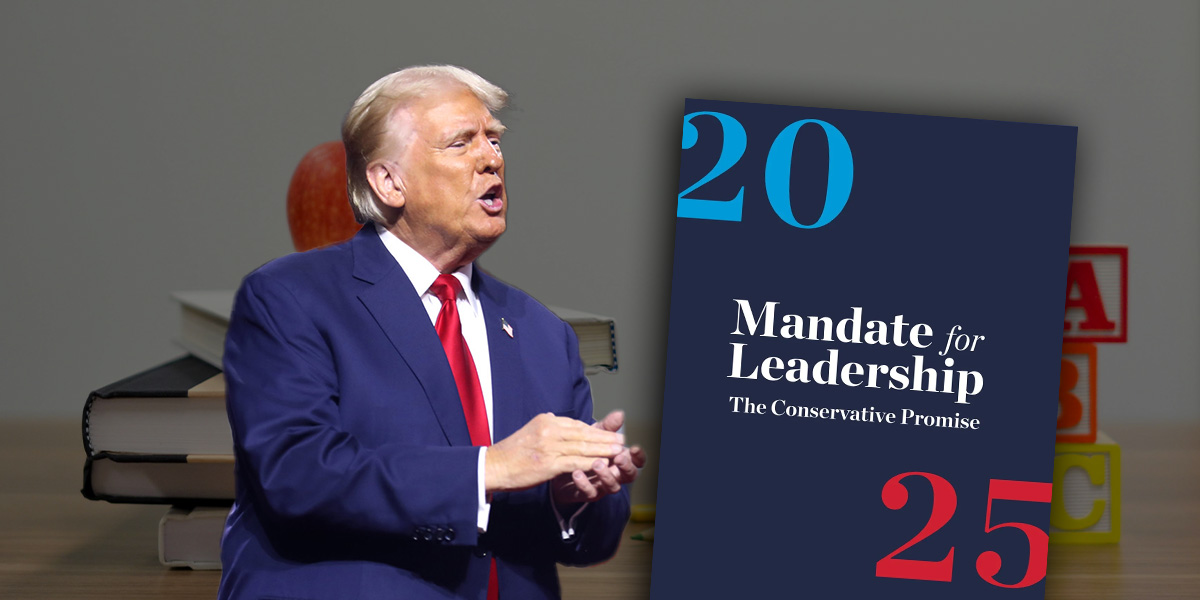Project 2025 is a conservative blueprint designed to reshape the federal government if Donald Trump is reelected. Far-right groups have championed this plan, which could bring sweeping changes to public education nationwide. Ohio is no exception.
From proposals to eliminate the U.S. Department of Education to censoring teachers and pushing for the privatization of public schools, Project 2025 outlines an agenda that would fundamentally transform education in the state.
As Ohioans prepare to cast their ballots, it’s important to understand how this plan could impact public schools across the state.
Here are five threats Project 2025 poses to Ohio’s public education system:
1. Elimination of the Department of Education
One of the most radical proposals in Project 2025 is the complete elimination of the U.S. Department of Education. The agency plays a crucial role in overseeing programs like Title I, which last year provided substantial federal funding to Ohio schools serving low-income students. The loss of these funds would deepen inequality in school districts already grappling with underfunding.
The Center for American Progress warns that cutting Title I could jeopardize thousands of teaching positions across the country, leading to higher teacher-to-student ratios and fewer resources for Ohio’s most vulnerable students. Urban districts like Cleveland, where federal funding supports critical programs, would be hit the hardest, along with rural communities that rely heavily on these funds.
Trump has repeatedly called for eliminating the Department of Education, most recently at a rally where he vowed to dismantle it if reelected.
2. Push for a Federal Voucher Law
Project 2025 advocates for a nationwide voucher system, which would divert taxpayer dollars from public schools to private and religious institutions. This policy would echo the push for expanded school choice that has already caused controversy in Ohio.
The state has implemented voucher programs like EdChoice, which allows students from underperforming public schools to attend private schools using public funds. However, these programs have come under fire for draining resources from public schools and disproportionately benefiting wealthier families. Critics argue that expanding such policies further, as outlined in Project 2025, would exacerbate inequality in Ohio’s education system.
Federal vouchers would deepen the divide between Ohio’s wealthiest districts and low-income schools, placing more pressure on already struggling public schools.
3. Censorship of Classroom Content
Project 2025 seeks to heavily restrict what teachers are allowed to discuss in the classroom, especially on topics like race, gender, and sexual orientation. This would severely limit educators’ ability to provide students with a comprehensive and inclusive education.
The blueprint calls for the removal of so-called “woke” content from school curricula, labeling discussions on race and LGBTQ+ issues as “anti-American” and “ahistorical propaganda.” Ohio educators fear that such policies would silence classroom discussions on critical subjects and stifle honest conversations about the country’s history and social issues.
Recent legislation in Ohio, such as House Bill 327, mirrors the restrictive educational measures proposed in Project 2025. The bill sought to ban teaching “divisive concepts” around race and gender in K-12 schools but faced significant opposition from educators and civil rights advocates. If Project 2025 is implemented, similar efforts could be federally mandated, stifling educational freedoms in Ohio.
4. Discrimination Against LGBTQ+ Students
On Page 334, Project 2025 proposes rescinding federal Title IX protections for LGBTQ+ students, which currently prohibit discrimination based on gender identity in schools. This would strip transgender students in Ohio of the right to use bathrooms and locker rooms that align with their gender identity and allow staff to disregard students’ preferred pronouns.
Ohio has already seen attempts to curtail LGBTQ+ rights in schools. In recent years, local school boards have debated policies to restrict transgender students’ access to appropriate facilities, leading to protests and legal challenges. The adoption of Project 2025’s agenda would likely lead to a rollback of LGBTQ+ rights in Ohio schools and embolden efforts to discriminate against these students.
Moreover, the plan calls for any educator or librarian providing materials that address transgender issues to be labeled as a sex offender. This extremist language could create a hostile environment for both teachers and students and significantly harm Ohio’s LGBTQ+ youth.
5. Risk to Pre-K Programs Like Head Start
Project 2025 also poses a serious risk to early childhood education programs like Head Start, which serves thousands of low-income children in Ohio. This program provides critical services such as no-cost childcare and early education, which are essential in rural and underserved areas.
Ohio, like many other states, is experiencing a childcare crisis, with a shortage of available spots for young children. Eliminating Head Start would further exacerbate this issue, leaving working-class families without affordable childcare options. The economic impact would be devastating, particularly in rural counties where access to childcare is already limited.
Many Ohioans employed through Head Start programs—teachers, aides, and support staff—would also face job loss, contributing to economic instability in these regions.






